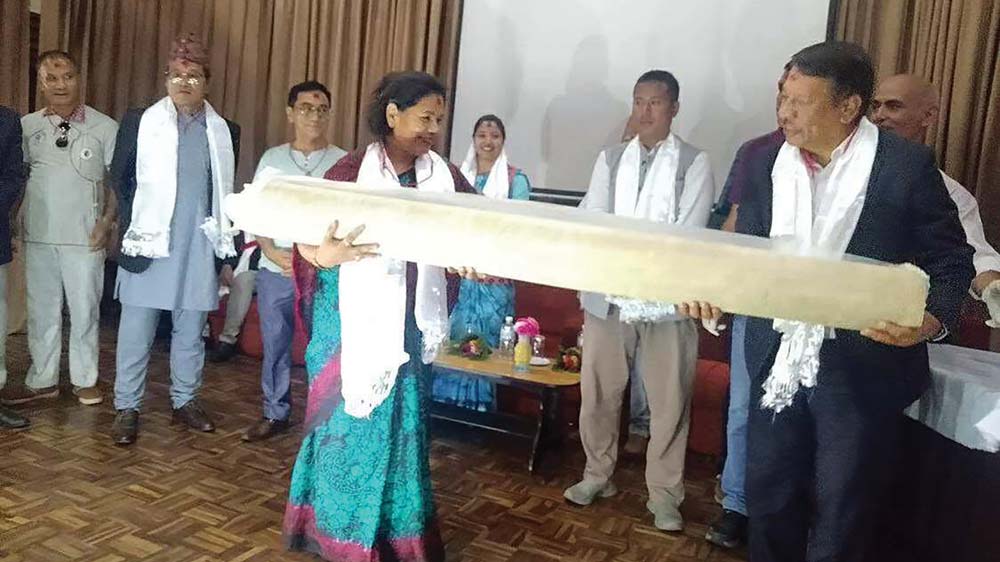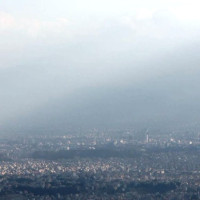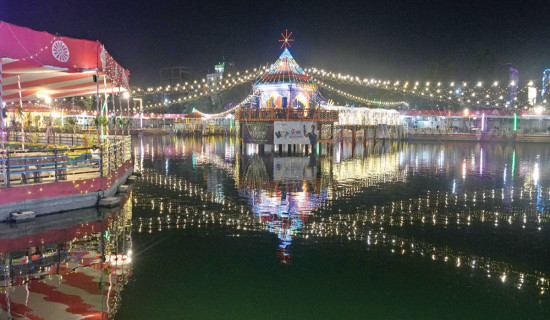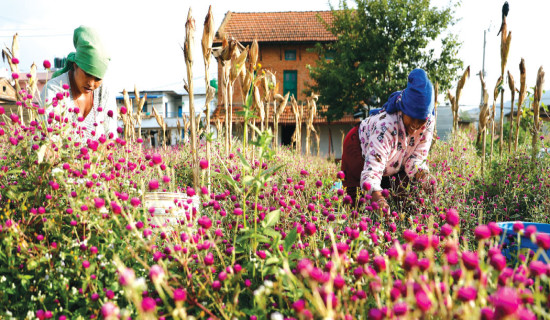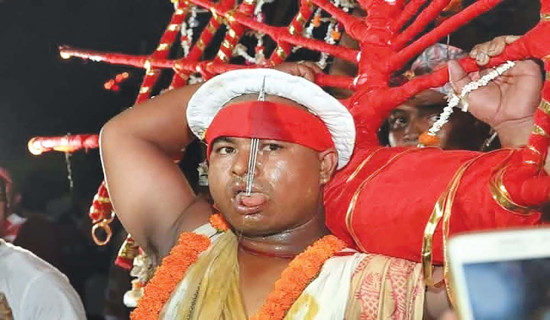- Monday, 5 January 2026
Stolen thangkas restored in place after 45 years
Kathmandu, Aug. 4: Three stolen thangkas -- a 300-year-old depiction of Chintamani Lokeshwar, a 575-year-old thangka featuring Gagan Simha Bharo and his wife, and a 321-year-old representation of Bhairav with Keshchandra – have been restored to their original place after 45 years.
The National Museum has recently handed over three ancient artefacts, repatriated from the United States, to the Paravat Mahavihar Conservation Society, located at Itumbahal, under the auspices of the Bhaskardev Sanskarit Keshchandrakrit Paravat Mahavihara Conservation Society.
The artefacts handed over during a ceremony held at the Chhauni Museum on July 26 are thangkas, traditional Nepalese Buddhist scroll paintings.
Deputy Prime Minister and Minister of Urban Development, Prakash Man Singh, and the Chief of the National Museum, Aruna Nakarmi, handed over the ancient artefacts to the President of the Mahavihara Conservation Society.
These artworks were stolen on September 14, 1980 (29th of Bhadra in the year 2037) from the Paravat Mahavihar. The stolen artworks were discovered at the Art Institute of Chicago, America, in 2003. After 45 years, they were brought back to Nepal on March 2, 2025, and kept in the National Museum.
The number of repatriated artefacts has reached 42, including these three that were restored to their original place.
Providing information about the repatriation of Nepal’s heritage, Sarita Subedi from the Department of Archaeology informed that 198 stolen artefacts have been brought back to Nepal.
She said, “Of them, 125 were returned from the United Kingdom, 29 from China, 22 from the United States, 13 from India, five from Australia, one from Germany, one from Austria, one from Italy, and one from a European collection. Of the total 198 repatriated artefacts, 42 were restored to their original places.”
She further informed that three other artefacts are in the process of repatriation from Belgium.
The Chhauni Museum safely houses the repatriated antiquities whose origins have not been ascertained. Of the 198, 144 antiquities have been kept in the exhibition room for display in the NA building, said Aruna Nakarmi, Chief of the National Museum of Chhauni.
Some artefacts could not be restored to their original places because the original locations from which they were taken are not known, she said.The statue of Vasuki Nagraja and the statue of Umamaheshwar were restored at Tangal Hiti of Lalitpur; the statue of Buddha, stolen from Bhinche Bahal of Lalitpur, the Toran of Yampi Mahavihar, Gandharva stolen from Itumbahal, Salbhanjika Tundal stolen from Itumbahal, and Bajradhar stolen from Dolakha, a 12/13 century idol of Nagraj stolen from Naxal and others have already been restored to their original places, she informed.
In one part of the exhibition rooms of NA, there is an 11th-century statue of Shreedhar Vishnu flanked by his divine energy (Shakti), Goddess Laxmi and his mount Garuda. It was stolen from Bungamati’s Bahili Hiti in Kotatole, Lalitpur Metropolitan City–22, in the 1980s.
It has already been returned from the Metropolitan Museum of Art, New York, and is awaiting restoration.
Similarly, the four-faced Shivalinga of Pashupati, Panchadewal, the statues of Shreedhar Vishnu, Agastya Rishi, Shiva of Kankeshwari Temple of Kathmandu, Umamaheshwar, the statue of Buddha of Bungamati, Machhindrabahal Tole, the goddess holding a lotus, Tara, dancing lady of Ibahabahi, and the head of Saraswati of Pharping are awaiting placement in their original locations.
Despite having submitted proof of origin, several artifacts are yet to be repatriated. These include 30 from private collections in Sweden, 24 from UK auctions, 16 from auctions and museums in France, 15 from Swiss auctions, six from U.S. gallery museums, six from Austria, two from the Victoria BC Gallery in Australia, and one each from China, a private collection in Singapore, Thailand, and three from Belgium, according to DoA.
Saubhagya Pradhananga, Director General of the DoA, informed that repatriating cultural properties faces numerous legal complexities, primarily due to weak international coordination and ownership disputes, especially for items before the establishment of modern heritage laws.
“However department had submitted all relevant documents regarding the Taleju Bhawani's necklace. “We are still awaiting a response. Everyone wants the necklace to be repatriated to its hometown,” she said.
Despite a comprehensive evidence including inscriptions, manuscripts, photographs and testimonies, the Art Institute of Chicago continues to ask for more proof.
There are many objects—gods, torans, and other artworks—on display in museums and private collections around the world.
From July 31, an exhibition “Absent Gods: Nepal’s Lost Heritage” is being held at the Patan Museum, organised by the Nepal Heritage Recovery Campaign (HNRC). The exhibition focuses on statues of gods, torans, and other artefacts that have been taken from their original locations in Nepal and now reside in museums and private collections around the world.
In this exhibition, the artefacts are presented against stark backgrounds, emphasising their physical and symbolic dislocation. Floating in darkness, they appear unanchored and detached from the palaces, rituals, and communities that once gave them life. This is a reminder of how living heritage is transformed into an aesthetic display when removed from its original home.
In the exhibition, rare archival photographs by the acclaimed Cristeena Chitrakar are on display. These photographs depict stolen cultural objects, including a 19th-century gilt copper Ganesh stolen from Chaukot, Panauti, which was sold at Bonhams in 2021, an 18th-century plaque looted from the Balkumari Temple in Thimi, part of the Peter Kienzle-Hardt Collection, later sold at Galerie Zacke, an 8th/9th-century Chaturmukhi
Shivalinga stolen from Sakhona, Lazimpat, currently part of the Solomon Family Collection in the USA, a 17th-century stone sculpture of Laxmi-Narayan stolen from the Sundhara Temple, Nuga Tole, Patan, now located in Australia.
Moreover, the exhibition features a 15th-century painted wooden sculpture stolen from Rajashri Mahavihara, now housed in the Art Institute of Chicago, a 13th-century wooden temple strut stolen from Shree Jaya Manohar Mahavihara, Patan, and many more such significant artifacts.

